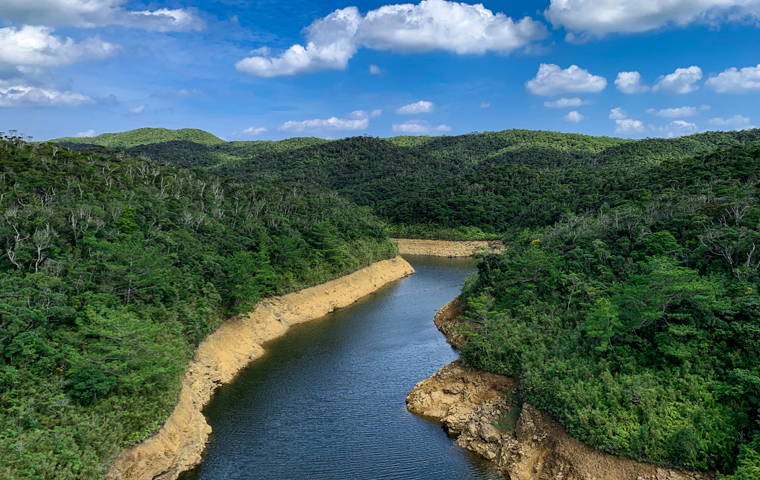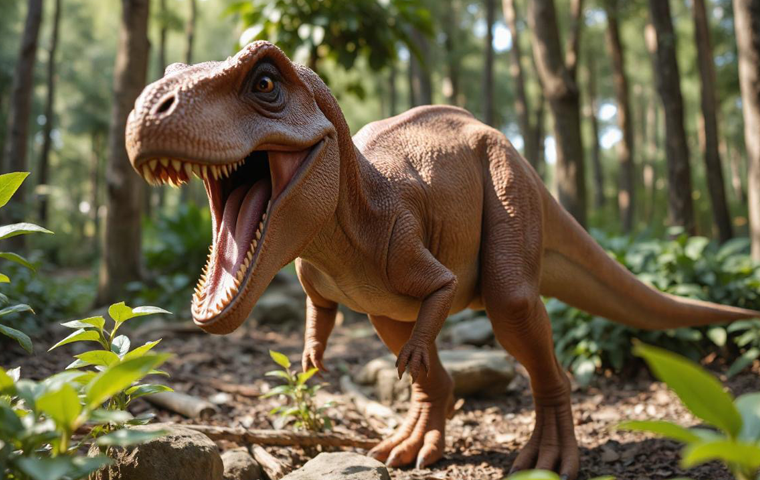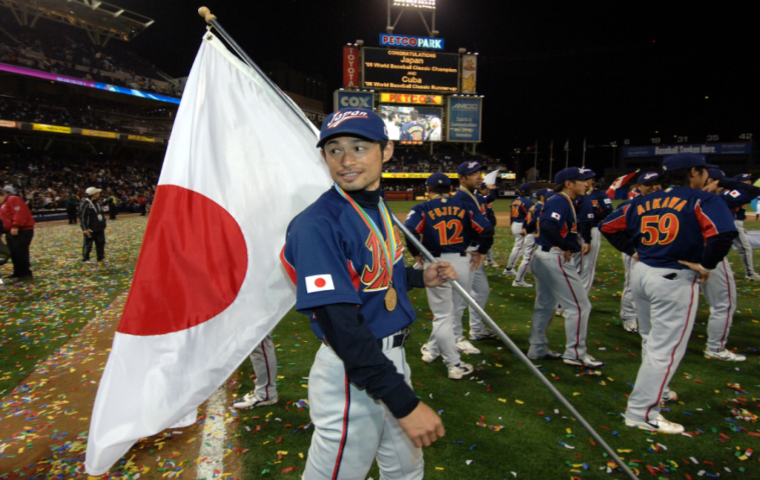Okinawa’s New Pulse: The Light and Shadow of the “JUNGLIA” Theme Park
Related Articles
A Grand Dream Painted in the Yambaru Forest — Opening the Era of “Power Vacance”

On July 25, 2025, a vast tract of land straddling Nakijin Village and Nago City in northern Okinawa Island welcomed a brand-new theme park: **JUNGLIA OKINAWA**. This is more than the birth of another leisure facility. It marks the start of an ambitious social experiment aimed at redrawing Okinawa’s tourism map—and, by extension, shaking up Japan’s tourism strategy as a whole. At the helm is renowned marketer **Tsuyoshi Morioka**, CEO of **KATANA Inc.**, celebrated for leading Universal Studios Japan (USJ) from crisis to a dramatic turnaround. Under his direction, a bold plan has begun to create a new economic engine on this land.
The park’s concept is “Power Vacance!!”—a completely new kind of experience fusing “excitement and luxury” against the overwhelming natural backdrop of Yambaru, a UNESCO World Natural Heritage site, far from the hustle of the city. It’s a strategic choice to harness Okinawa’s greatest asset—its untouched nature—to deliver value urban theme parks can’t replicate. Morioka frames the project as a mission that goes beyond business: “What legacy can our generation create? We want to make Okinawa richer—and Japan richer.” His words signal a venture grounded in responsibility to the next generation and a strong will for regional revitalization. The vision represents a culmination of the “Katana Method,” which systematizes consumer-centric marketing and sustainable organizational strategy; even Prime Minister Shigeru Ishiba attended the press conference, underscoring the project’s national significance.
At the core is an effort to transform the very structure of Okinawa tourism: to shift visitor flows deliberately from the traditionally crowded south (around Naha) to the nature-rich yet economically lagging north. Positioning JUNGLIA as a new northern “hub”—a detonator for a tourism ecosystem—it aims to stimulate demand for hotels, transport, and related services and tackle the long-standing north–south economic divide. Notably, the roughly 60-hectare site repurposes a former golf club. By choosing development that avoids new deforestation in Yambaru’s delicate environment, JUNGLIA signals a commitment to sustainability.
Experiences That Stir the Instincts — A Full Lineup of Attractions Fused with Nature
JUNGLIA features **22 attractions**, **15 dining venues**, and **10 retail outlets**, all meticulously designed to embody “Power Vacance!!”. Rather than leaning on established character IPs like Disney or USJ, JUNGLIA elevates the **environment itself**—Yambaru’s terrain and flora—to center stage. As Morioka explains, instead of flattening the land, the original undulations are used to craft both thrills and vistas—an approach that marries cost efficiency with originality.
The emblem of this philosophy is the flagship “Dinosaur Safari.” Guests board large off-road vehicles to traverse a jungle where 20 life-size dinosaurs, recreated with cutting-edge technology, roam. The climactic scramble to escape a ferocious T-Rex delivers raw, VR-proof excitement. The rugged topography also powers aerial adventures: “Horizon Balloon,” a giant gas balloon ride offering panoramic views, and “Sky Phoenix,” a ~280 m zipline that lets riders glide through jungle ravines, heighten the sense of unity with nature. For thrill seekers, there’s “Human Arrow,” which launches riders upward like a reverse bungee from about 15 m, and “Skyend Trekking,” a swaying 84 m suspension bridge that tests both nerve and instinct.
Coexistence with nature is another key theme. “Buggy Voltage” sends riders speeding along jungle courses in dedicated buggies, while “Yambaru Friends” offers encounters with local endemic species like the Okinawa rail, turning fun into an opportunity to learn about the region’s ecosystem. For recovery, “Spa JUNGLIA” provides an infinity pool and natural hot springs. At night, JUNGLIA “HANABI” fireworks synchronized to music color the subtropical sky to close the day’s adventures.
That said, the portfolio warrants caution: many thrill attractions impose a 132 cm (approx. 52 in.) height minimum, implying a target age slightly older than typical family parks. The hilly grounds and Okinawa’s severe heat can also demand considerable stamina—meaning the experience may not be comfortable for all guests.
Between Expectations and Reality — Opening-Week Euphoria and Emerging Challenges
Despite its fanfare, JUNGLIA’s launch was not entirely smooth. A sharp gap between expectations and on-the-ground reality spilled across social media, unleashing a storm of criticism. At the heart of the problem lay severe **operational under-preparedness**—most damagingly, the **official app’s system failures**, which were critical for securing timed-entry passes to popular attractions. With this “central nervous system” malfunctioning, order inside the park unraveled: some visitors monopolized passes while many others could experience almost nothing, igniting widespread frustration.
Consequently, wait times for Dinosaur Safari exceeded five hours, with many guests spending most of their day in lines and managing only one or two attractions. This reality clashed dramatically with glossy promotional imagery and fueled accusations of “overhyped advertising.” The heavy use of AI-generated images—rather than real photos—on the website further amplified distrust. Infrastructure shortcomings also bit hard: limited shade for Okinawa’s intense sun and sudden squalls made prolonged waiting punishing. To make matters worse, a string of typhoons approached during the opening period, and lightning forced frequent attraction shutdowns—turning confusion up to the maximum.
An operational crisis then morphed into a credibility crisis as PR responses faltered. A wave of low-star Google Maps reviews temporarily disappeared from public view, prompting suspicions they had been deliberately removed by the operator. In the social-media era, attempts—perceived or real—to smother criticism only pour fuel on the fire. In response, JUNGLIA announced an extraordinary measure: open-ended re-invitations for all guests who visited on opening day. Even so, the promised “Power Vacance” left many with memories of a stressful “power (struggle),” and that fact weighs heavily.
A High-Stakes Bet on Okinawa’s Future — What True Value Will JUNGLIA Deliver?

Beyond the opening turmoil, JUNGLIA emerges as a grand wager on Okinawa’s future. Its success or failure goes far beyond any single company; it is a litmus test for structural change in the regional economy and for Japan’s broader tourism strategy. **Kansai University** estimates roughly **¥6.8 trillion** in economic ripple effects and over **880,000 jobs** created over 15 years—potentially a game-changer for Okinawa, which struggles with one of Japan’s lowest per-capita incomes.
Crucially, the project seeks to end the “leaky bucket” dynamic in which tourism revenue flows out of the prefecture. With local champions like Ryukyu Bank and Orion Breweries involved, JUNGLIA is trying to build a system where money circulates within the region. The ¥70 billion investment, Morioka says, is calibrated to avoid overinvestment and ensure steady profitability. Still, compared with regional parks of similar scope, it’s far from small—the question is whether that scale can translate into sustainable success.
But there are deep shadows alongside the light. Chief among them is overtourism. Although opening-day traffic jams were averted through careful planning, long-term pressure on northern infrastructure, the natural environment, and local life seems unavoidable. The park’s very structure contains a paradox: showcasing Yambaru’s “authentic nature” as the prime attraction while deploying mass tourism right next door. How JUNGLIA reconciles this and achieves genuine coexistence with the environment will determine its long-term value.
JUNGLIA also plays an experimental role as Japan’s tourism industry shifts phases—most notably with a dual pricing system that sets higher rates for inbound visitors than for domestic residents. This aligns with the national strategy to move from raw visitor numbers to “quality tourism” that raises per-capita spend. Whether this price strategy gains international acceptance could profoundly shape the future of inbound travel to Japan.
Can JUNGLIA rise from its stumbling start to become Okinawa’s economic savior—or will it falter under outsized expectations? The challenge mirrors the very issues Japan faces in charting its future, making JUNGLIA a revealing mirror for what lies ahead.



